Nothing looks more disgusting than the fuzzy, slimy molds lurking in the corner of your rooms. Sometimes you don’t realize when it started.
The clusters of fungi suddenly creep on the wall without you even knowing. In a suitable condition, mold can grow and multiply within 24 hours.
The worst thing about mold is its spores. The fuzzy cluster on your corner is just its body—or hyphae, while its spores might be floating on air invisibly. It can be inhaled into your airways and resulting in respiratory problems.
However, looks no further than your kitchen to get rid of mold. Vinegar is one of your choices to kill the problematic mold.
Does vinegar kill mold?
Yes, vinegar has an active property to kill mold. It contains acetic acid which has antimicrobial activity. The acid itself is mild for a human.
It is often used in cooking and can be found in every household. However, it is proven effective to kill the fungus. Approximately 82% of mold species is sensitive to acetic acid.
Step by step of killing mold with vinegar
1. Determine the area
Determining the area allows you to estimate how much the volume of vinegar is needed. Mold grows easily on the damp and warm area.
Your kitchen and bathroom are two of the most favorite places for mold growth due to constant contact with water, which in turn creates moisture suitable for mold.
Look around the corner of your kitchen, the sink, or behind appliances. In the bathroom, mold might be lurking on the shower handle, on the walls, curtain, and even on the ceiling.
You will need a generous amount of vinegar on each place, so make sure you have enough of it.
2. Prepare you protective kit
Vinegar is mild and safe for skin contact. However, lots of contacts can disrupt lipid protection layer on your skin and result in irritation.
Use non-porous gloves for skin protection. A latex glove is adequate. Make sure it is sturdy enough and not easily broken.
The more important thing is to use a mask. You will be in close contact with the mold. When handling the mold cluster, the spores could be released into the air.
To prevent it from entering the airways, make sure you use a safe mask. An N95 mask is safer since it has very tight pores.
3. Get a spray bottle
The spray bottle is a convenient tool to dispatch the vinegar efficiently. You may use disposable cloth, soak it in vinegar, and apply it to the mold.
But most of the vinegar will be retained in the cloth and only a few that will be able to reach the mold. If you use disposable cloth, you might need more volume of vinegar.
4. Do not dilute vinegar with water
Vinegar contains only 5-20% of acetic acid. If you dilute the vinegar in water, the acetic acid concentration will be decreased and might become less effective.
5. Use only white distilled vinegar
Although other vinegar, such as apple cider or wine vinegar, might have acetic acid component, their sugar content promote the growth of the microorganism. Use white vinegar to be safe.
6. Spray and let it sit
Spray generously until the mold patch is covered and become wet. Observe for small speck and make sure it is covered, as it may grow bigger if left untreated.
After spraying, give at least one hour so the vinegar can penetrate the mold and kill it completely.
7. Get more than one kind of brush
Depending on the area, you may need a different kind of brush. To clean a small cleft on the shower head, or another narrow area, you need a smaller brush.
On the large one, use normal or larger brush. Brush carefully until the mold comes off of the surface. You might need to exert some force. However, if the mold is resistant to brushing, leave it for further treatment.
8. Wipe it out
Get disposable adsorbent clothes and a bucket of warm water. Don’t take off your gloves. Soak the cloth in warm water and wipe the mold carefully. Toss the cloth with mold on it, and use the new one if you need to wipe more area.
9. Do not wash it
Do not wash the area with water after wiping. Keep it dry and clean. If you need to remove the remaining dislodged mold, use disposable cloth. The acetic acid may leave an unpleasant odor, but it will come off in a few hours.
10. Do not mix vinegar with bleach or peroxide
If the mold is resistant after brushing, you may need other agents to kill the mold, such as bleach/chlorine or hydrogen peroxide. Both of them are stronger than vinegar. They need to be handled more carefully.
In any case, don’t mix those agents with vinegar. Either bleach or hydrogen peroxide may create toxic substance when mixed with vinegar. Use them separately. Use a solution of 1 part of bleach in 3 parts of water if you prefer using this agent.
Vinegar for mold prevention
1. Vinegar to prevent mold in the bathroom
Keep a spray bottle of vinegar in the bathroom. Spray the area prone to mold growth with vinegar every few days. Don’t wait until the mold appears.
Keep in mind that mold grows in a humid area. Make sure you ventilate the bathroom after each shower to let the air circulates nicely.
2. Vinegar for mopping the floor
Use vinegar to mop the floor on a mold-prone area such as kitchen corner. First, clean the area as usual then finish it with vinegar spray.
Do not rinse with water. Let it dry with adequate aeration. You can also spray vinegar on the sink every few days after cleaning.
3. Keep the room dry
The most important thing is to keep the room dry. Fix any leaks, wipe the surface if needed, invest in good ventilation and let the sunlight in.
Although the 18% of mold species probably is resistant to vinegar, this agent is safer and non-toxic for human compared to another agent. So, does vinegar kill mold effectively?
The answer is ultimate ‘yes.’ However, don’t hesitate to call professionals if you have clusters of mold which are resistant to various approaches.
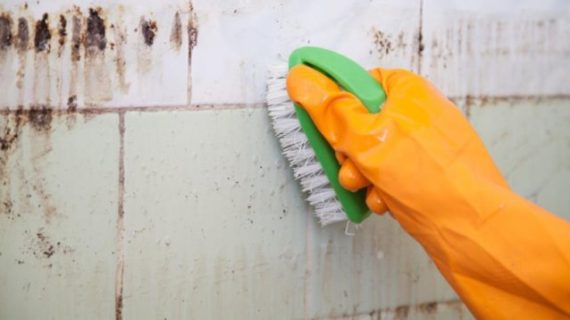

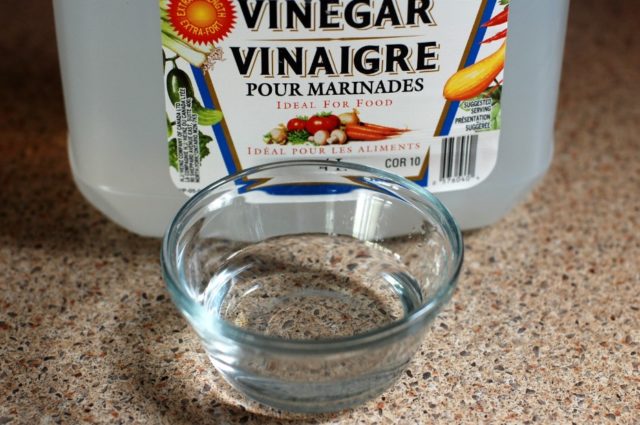
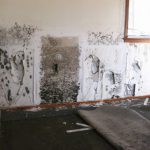
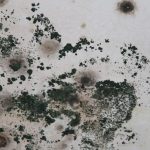

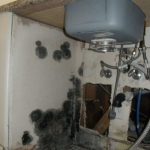
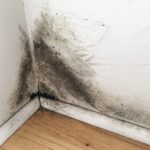

HUGE infestation of mold in Denver Housing Authority property. Forced out when mold was reported right before inspection. This mold is from faulty plumbing done years before I moved in. Denver Housing Authority forced my family out and moved another family in about a week and a half later but never fully fixed all the issues wrong in that house. There are several other properties over there owned by Denver Housing Authority and those families are also living in filth. Denver Housing Authority does not do proper inspections and I’m also contacting the Department of Health to go and investigate them as well. When they forced my family out all they did was clean the surface of this mold but this mold is growing behind all the walls in that apartment. This picture was taken from inside my kitchen at the place. When I reported it they had to remove all of the fixtures in both bathrooms in the apartment because it was completely covered in mold. I reported this mold for years and they did nothing in the 7 yrs I lived there. My family and I have been sick the entire time we were in the apartment and Denver Housing Authority refuses to talk about this mold issue they have. My children and I have been in and out of the hospital with Respiratory infections, migraine headaches, rashes, eye and sinus membrane irritations, high blood pressure, nose bleeds and much more. It got to the point where we were forced to stay in hotels and Denver Housing refused to even reimburse us. If something isn’t done about Denver Housing Authority soon there will be many more sick families bringing lawsuits against them
Can you just spray this on white mold and leave it to kill it?